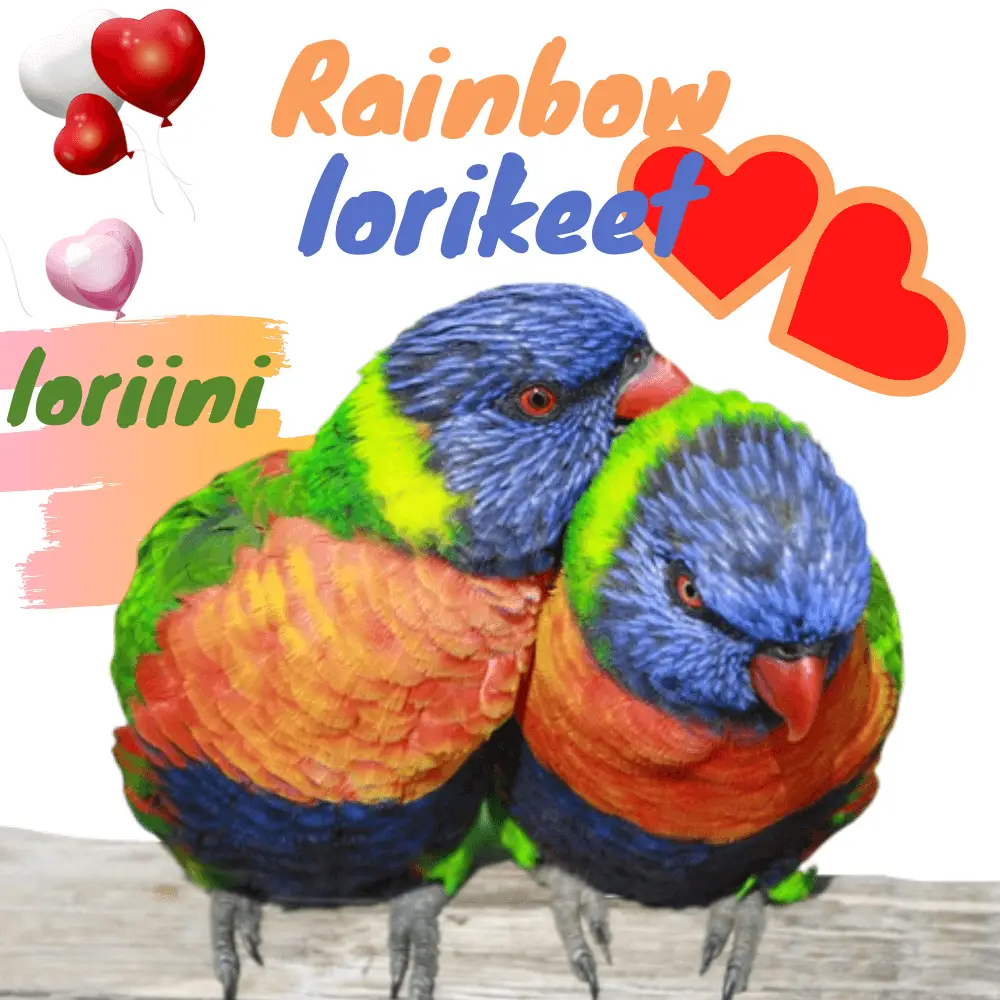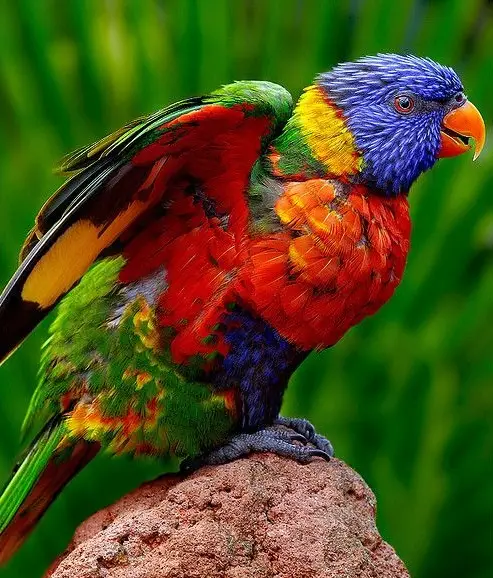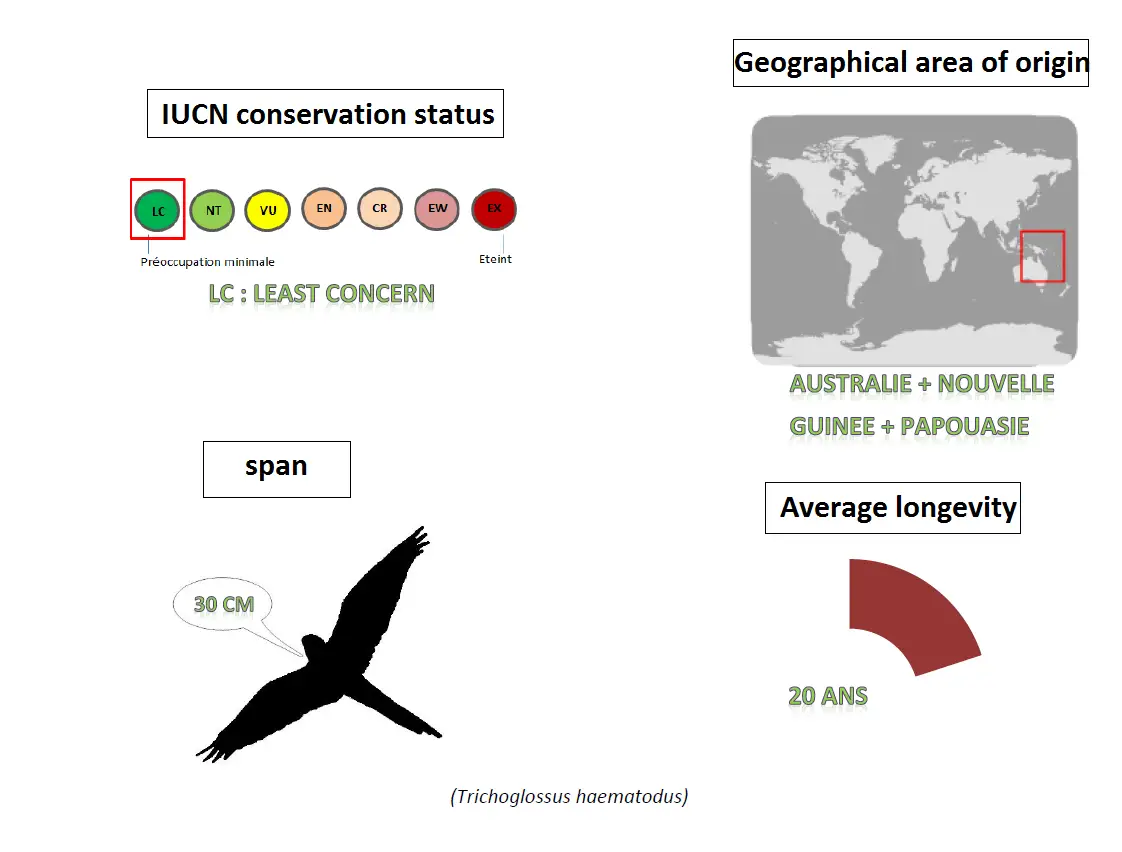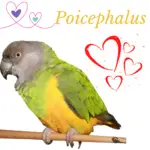
The Rainbow Lorikeet or Loriini(Trichoglossus moluccanus) is a species of bird native to eastern Australia (Queensland to Tasmania).
It is often considered a subspecies of Trichoglossus haematodus.
Order: Psittaciformes Famille: Psittacidae
CITES Appendix II, free quota holding
Sex: No sexual dimorphism
Weight: 100 – 160g
Phenotype:
- Very colorful parrot with a blue head, a yellow collar, a greenback, a red-orange neck, and a blue-purplish belly
Rainbow lorikeet Character
Character: Must be kept in a large aviary and is not intended to be a pet bird. Often aggressive towards other species but remains jovial and player. A disadvised to beginners because requires strict housing conditions and hyiène as nectarivorous

Loriini
Rainbow lorikeet pet
SOURCE:Love of Pets
Indeed, it has, at the end of its tongue, long papillae which it uses to extract pollen and nectar, which constitute the base of its food. It is, for this reason, that man had difficulty making it a pet. It is very difficult to provide this parrot with a balanced diet and quality, prefabricated food is still scarce in stores.
When an animal does not have all the elements to meet its nutritional needs, it becomes weak and more susceptible to disease. For a long time, the Lorikeet struggled to survive in captivity, because its food was unknown.
Fortunately, that era is almost over; people now share this information more easily on parrot lover forums and sites! The Loriquet Loriini, therefore, has a better quality of life in our homes.
Rainbow Lorikeet Types
Rainbow Lorikeet or Loriini (Trichoglossus haematodus haematodus) The Trichoglossus haematodus comprises more than 20 subspecies, very complex to classify and differentiate because they correspond to imperceptible color differences. The best known are Trichoglossus haematodus moluccanus, Massena, capistratus, forsteni.
Rainbow Lorikeet Description
Rainbow Lorikeet or Loriini is among the most colorful parrots. Indeed, the head is light blue, part of the neck is yellow while the throat is red-blue.
The intense green body is covered with yellow “scales”. The beak is orange, the eyes have a black iris bordered with orange. The legs are light gray.
In general, it measures 30 centimeters and weighs around 150 grams. It has sturdy legs which make it very agile. His back and neck are mostly green, his head and belly are blue and his chest is a well-cut block of orange hues.
With its beak and red eyes, it is simply mesmerizing! However, its plumage is not the most exceptional. In addition, his name “Trichoglossus” comes from ancient Greek and tells us that he has “a hairy tongue”. Why does he have a hairy tongue? Because her favorite meal is in the flowers!
Rainbow Lorikeet Size
Rainbow Lorikeet size: 26 cm
Rainbow Lorikeet lifespan
25 years
Rainbow Lorikeet Sexing
scientific sexing
Rainbow Lorikeet Breeding
It reproduces with difficulty in captivity and only in large aviaries. In addition, its reproduction requires an adapted and very specific diet considering the fact that it is very fond of nectar and bud.
Incubation: 25 days
Youth flight: 7-8 weeks
Rainbow Lorikeet Habitat

Eastern and Northern Australia, Tasmania, and Bali
Perhaps you have already seen videos featuring this magnificent parrot? He wears magical colors and never stops swarming and chatting; no wonder we want to film it! Its name is the Rainbow Lorikeet or, in Latin, Trichoglossus moluccanus.
In the wild, it lives mainly in eastern Australia and Tasmania, although its name, “moluccanus”, comes from the Moluccas Islands, Indonesia. Scientists have had difficulty in classifying the different species of Lorikeets:
they have long thought that the “moluccanus” was of the same species as the Trichoglossus haematodus, or Blue-headed Lorikeet, whose habitat is extended to the size of Indonesia.
Today, with DNA analyzes of animal species, many classifications are revised, and this is how our Rainbow Lorikeet was recognized as a species in its own right by the International Ornithology Committee.
Rainbow Lorikeet Breeding Behavior
Cheerful, lively, cheerful and noisy: he is not highly recommended in an apartment but filled the aviaries with his zest for life and his colors.
Washington Treaty
Appendix II
Food For Rainbow Lorikeet
Rainbow Lorikeets or Loriini are mainly vegetarian, with a tendency to frugivore and nectarivore. In their natural environment, they mainly seek their food in eucalyptus trees, but also in fruit trees in agricultural land because they are fond of fruits and milky seeds.
They also eat buds, insect larvae very occasionally or even pollen and nectar that they seek directly from the flowers using their pointed beak and their tongue covered with multiple adhesive papillae.
In addition to nectar and pollen, it loves fruits and also eats buds and insects. It participates in the pollination of flowering plants in its environment, which is good, but it can be a plague for those who grow fruit trees, which is less good.
In the wild, he chooses a lifelong partner, and he stays in a group to eat as well as to sleep. He is noisy and has little fear of humans; it is a bird commonly seen at feeders, in Australia, of course!
Nectar, flowers, buds, seeds, and fruits

rainbow lorikeet food
Rainbow Lorikeet Care
SOURCE:Cute Critter Channel
Rainbow lorikeet in captivity
In captivity, the Lorikeet is a very demanding bird. Indeed, he is very active and likes to interact. You will need to give it a lot of attention and it will take time to maintain it every day.
You will need to provide him with lots of perches and toys so he can untie his paws and chew at ease. Although it has a small beak, it is very strong.
The toys given to him must, therefore, be very solid and inspected daily to keep his environment safe. Water is an essential element, but even more so for the Loriquet, who loves bathing and can play it several times a day.
Rainbow Lorikeet Cage Setup
His cage should be rather wide than high so that he has space to play and walk around. You will have to think of a strategic location and easily washable surfaces where you will install your house.
Remember that he has a generally moist diet and that his droppings will be quite liquid. You will have a lot of splashes to clean daily.
Unfortunately, already prepared food formulas often contain too much sugar and can damage our friend’s pancreas. So her diet should be well planned;
various fruits and vegetables will form the basic food (purees are ideal, sugar-free, on the other hand), to which proteins will be added (natural pollen, crushed hemp or soybeans, already shelled nuts and cooked eggs are very healthy).
He will appreciate rice, pasta, and small bites of meat or fish which will allow him to vary his diet and keep it in superb shape. Warning! Dishes containing fresh food should not stay too long in the cage, to avoid the proliferation of bacteria and insects …
Complicated, our Loriquet? It is true that it may not be the ideal bird for someone who is not often at home, who lives in a quiet apartment, or for people who want the first bird.
On the other hand, in a house where there is space, supervision, and action, the Rainbow Lorikeet or loriini can flourish. He will thank you for your efforts with his colorful character, which will put the sun in your home.
So, you can’t help but film it to share its somersaults, its tricks, its explorations and its cries, which resemble the whistles of robots, its imitations of sounds, the discovery of its new hiding places and its comic dances, only he will be happy to give you a show.
Rainbow Lorikeet Price
These beautiful parrots make a colorful and friendly addition to any birdcage. Rainbow Lorikeets generally sell for between $400 and $800. Swainson’s lorises, on the other hand, sell for between $800 and $1,200.
Swainson’s Lory
Rainbow Lori (Green-naped Lori)
Rainbow Lorikeet Baby
SOURCE: Bree Rooney




















